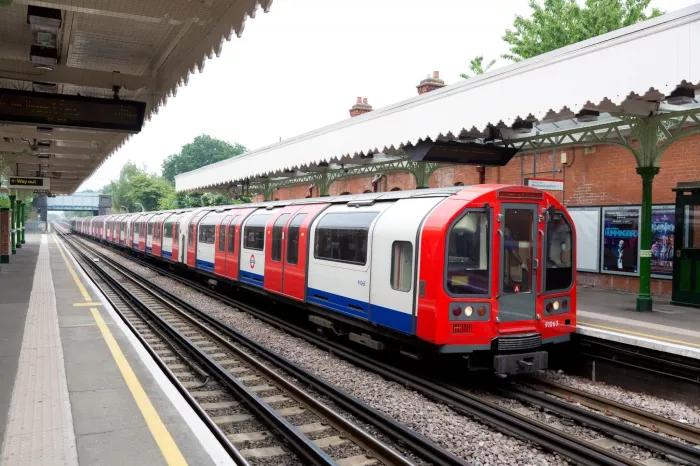In 2025, London’s rail network stands as one of the most complex and extensive public transportation systems in the world. With a history dating back to the world’s first underground railway in 1863, London’s rail system has evolved into a vital lifeline for millions of commuters and tourists alike. This article explores the history, current state, and future prospects of London’s rail journey planning tools, while also examining the advantages and challenges faced by the city’s rail network.
The History of London’s Rail Network
Early Beginnings
The story of London’s rail network begins with the opening of the Metropolitan Railway in January 1863. This pioneering line, running from Paddington to Farringdon, was hailed as a “great engineering triumph” despite initial skepticism. The success of this first underground railway paved the way for an extensive network that would eventually become the London Underground.
Expansion and Innovation
Over the next century and a half, London’s rail network expanded rapidly. Key milestones include the opening of the first deep-level electric railway in 1890, the electrification of the District and Circle lines in 1905, and the introduction of the iconic roundel symbol in 1908. The network continued to grow, incorporating new lines and stations, and evolving into the world’s most extensive and busiest underground system.
Modernization and Integration
In the late 20th and early 21st centuries, London’s rail network underwent significant modernization. The introduction of the Oyster card in 2003 revolutionized fare payment, making travel more convenient and efficient. The launch of Transport for London’s (TfL) online Journey Planner in 2002 further enhanced the user experience by allowing passengers to plan journeys across multiple modes of transport.
The Current State of London’s Rail Network in 2025
Technological Advancements
In 2025, London’s rail network benefits from cutting-edge technology. The introduction of contactless payments in 2014 has made fare payment even more seamless. Modern trains are equipped with advanced signaling systems, improving reliability and reducing journey times. The network also features real-time information displays and mobile apps that provide passengers with up-to-date travel information.
Sustainability and Accessibility
London’s rail network is increasingly focused on sustainability and accessibility. New trains are designed to be more energy-efficient, reducing the network’s carbon footprint. Stations are being upgraded to provide step-free access, making the network more inclusive for passengers with disabilities. These improvements align with the broader goals of reducing congestion and promoting greener transportation options.
Challenges and Disadvantages
Despite its many advantages, London’s rail network faces several challenges. The system’s age and complexity can lead to delays and disruptions, particularly during peak travel times. The high population density of the city also puts significant strain on the network, resulting in overcrowding on some lines. Additionally, the cost of maintaining and upgrading the network is substantial, requiring significant investment from TfL and the government.
The Role of the London Rail Journey Planner
Enhancing the Travel Experience
The London Rail Journey Planner is a crucial tool for navigating the city’s complex rail network. By integrating information from multiple sources, it provides passengers with comprehensive travel advice, including the fastest routes, real-time updates, and alternative options in case of disruptions. The planner also offers personalized recommendations based on user preferences, such as avoiding stairs or preferring less crowded routes.
Supporting Sustainable Travel
The Journey Planner plays a vital role in promoting sustainable travel. By encouraging passengers to use public transportation instead of private vehicles, it helps reduce traffic congestion and carbon emissions. The planner also provides information on low-emission zones and other environmental initiatives, further supporting London’s efforts to become a greener city.
Addressing Accessibility Needs
Accessibility is a key consideration for the London Rail Journey Planner. The tool provides detailed information on step-free access, wheelchair-friendly routes, and other accessibility features. By making this information easily accessible, the planner helps ensure that all passengers, regardless of their mobility needs, can travel comfortably and safely.
Future Prospects for London’s Rail Network
Continued Modernization
Looking ahead, London’s rail network is set to undergo further modernization. Upgrades to signaling systems and the introduction of new trains will improve reliability and capacity. The ongoing development of Crossrail, a major new rail line connecting east and west London, will provide even more options for travelers. These improvements will help the network meet the growing demands of the city’s population and economy.
Integration with Other Modes of Transport
The future of London’s rail network lies in its integration with other modes of transport. The Journey Planner will play a crucial role in facilitating seamless travel across buses, trams, and the Underground. By providing a unified travel experience, the planner will make it easier for passengers to choose the most efficient and sustainable mode of transport for their journey.
Addressing Climate Change
As concerns about climate change grow, London’s rail network will play a vital role in reducing the city’s carbon footprint. The continued expansion of electric trains and the development of low-emission zones will help make London’s transportation system more sustainable. The Journey Planner will support these efforts by providing passengers with information on greener travel options and promoting the use of public transportation.
Conclusion
In 2025, London’s rail network remains a vital component of the city’s transportation infrastructure. With its rich history, technological advancements, and commitment to sustainability, the network continues to evolve to meet the needs of its users.
The London Rail Journey Planner is a crucial tool in this process, enhancing the travel experience, supporting sustainable travel, and addressing accessibility needs. As London looks to the future, the continued modernization and integration of its rail network will be essential in ensuring the city remains a global leader in urban transportation.

